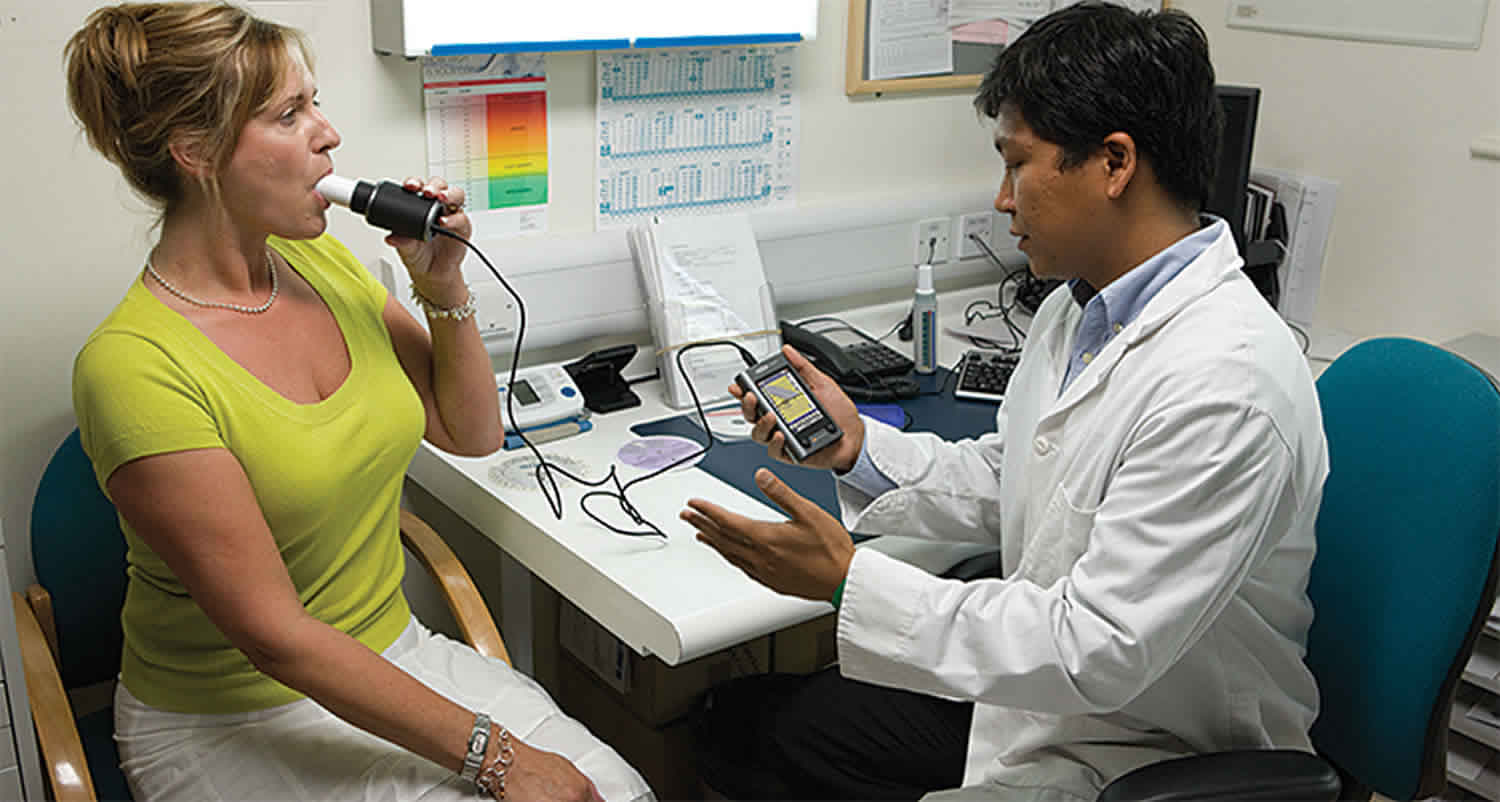What is spirometry
Spirometry is a simple breathing test that measures the total amount of air you can breathe out from your lungs and how fast you can blow it out. You will be asked to take a very deep breath and blow out as fast as you can into a mouthpiece until no more air comes out. Spirometry test can help tell if your breathing is obstructed by narrowed or inflamed airways. The results are useful in diagnosing lung conditions. For some conditions, it can be used to grade how severe your condition is.
Spirometry can help to assess if inhaled medication or inhalers can open up your airways by reversibility testing. This is when your health care professional asks you to use your inhaler or other medication, wait some minutes, and then repeat the test.
A spirometry test usually takes less than 10 minutes, but will last about 30 minutes if it includes reversibility testing.
There are various spirometer devices, but they all measure the same thing.
Many doctor clinics now have small, portable spirometers.
Some spirometers are more sophisticated and can give more detailed results.
If you have symptoms that could be a sign of asthma—like shortness of breath—you should have a spirometry test. A spirometry test can confirm whether you have asthma or another disease. And it helps your healthcare provider decide on your treatment. A spirometry test can also show how well your treatment is working. If follow-up spirometry tests show that your asthma is well controlled, your treatment is working. If it shows that your asthma is not under control, your doctor may need to change your medicine or give you more medicine.
When you have asthma, the lining of the airways in your lungs swells and the muscles around the airways get tight. Then the airways get narrow.
When you breathe, you have trouble moving air out of your lungs. As a result, you may cough, wheeze, feel short of breath, or have tightness in your chest. Exercise or cold air may make the symptoms worse. However, those same symptoms can also be a sign of other lung problems, such as a common cold, bronchitis, or pneumonia. They can even be symptoms of heart disease and other diseases.
It is important to know the cause of your symptoms to make sure you get the right treatment. The treatment for asthma is very different from the treatment for pneumonia or heart disease.
Why is spirometry test done?
Your doctor may suggest a spirometry test if he or she suspects your signs or symptoms may be caused by a chronic lung condition such as:
- Asthma
- Chronic obstructive pulmonary disease (COPD)
- Chronic bronchitis
- Emphysema
- Pulmonary fibrosis
If you’ve already been diagnosed with a chronic lung disorder, spirometry may be used periodically to check how well your medications are working and whether your breathing problems are under control. Spirometry may be ordered before a planned surgery to check if your lung function is adequate for the rigors of an operation. Additionally, spirometry may be used to screen for occupational-related lung disorders.
What happens during the spirometry test?
You will be asked some questions before you start to check that there is no medical reason why you should not do the test. It is important to put as much effort into the test as you can so the results are accurate.
You may have a clip put on your nose to make sure all the air goes into the mouthpiece. You will be shown how to blow into the spirometer before starting. You may be asked to blow three or more times into the spirometer to check the readings are similar each time.
Normally, you will be first asked to breathe in deeply and out gently. Once your health care professional is happy with the results you will move on to the next part of the test. You will have to breathe in again deeply, this time quite fast, and then breathe out as fast and as hard as you can until your lungs are empty.
Your health care professional may ask you to use your inhaler or other medication, wait 15–20 minutes and then repeat the test. For some drugs the wait may be 45 minutes between tests. This is called a reversibility test to see if the medication improves your breathing. If you use inhalers, you should bring them to your appointment.
Spirometry results
Spirometry usually measures:
- Vital capacity or VC (slow vital capacity) is how much air you can blow out in a relaxed manner, like a gentle sigh out until your lungs are completely empty.
- Forced Expiratory Volume in one second or FEV1. The amount of air you can blow out in one second. With healthy lungs and airways, you can normally blow out most of the air from your lungs in one second. This reading helps your doctor assess the severity of your breathing problems. Lower FEV-1 readings indicate more significant obstruction.
- Forced Vital Capacity or FVC. The total amount of air you can blow out in one complete breath after taking a deep breath in. You will be asked to blow out as hard and as fast as you can until your lungs are completely empty. A lower than normal FVC reading indicates restricted breathing.
- Your health care professional will look at how much air you can blow out in the first second and compare this to the total amount. This will give a percentage of air you can blow out in the first second. This is calculated by looking at your FEV1 and your VC.
The format in which the results appear will vary depending on the type of spirometer used. Normally, your health care professional will compare your measurements with the normal range of values.
The curves drawn by the spirometer are also important for your health care professional to understand your results.
Spirometry normal values
An example of a (normal) spirometry result for a hospital spirometer. If your best effort is below the minimum value (Min), your result is below what it is expected it to be. This information and the shape of the loop will help your health care professional understand your results.
Figure 1. Spirometry normal values
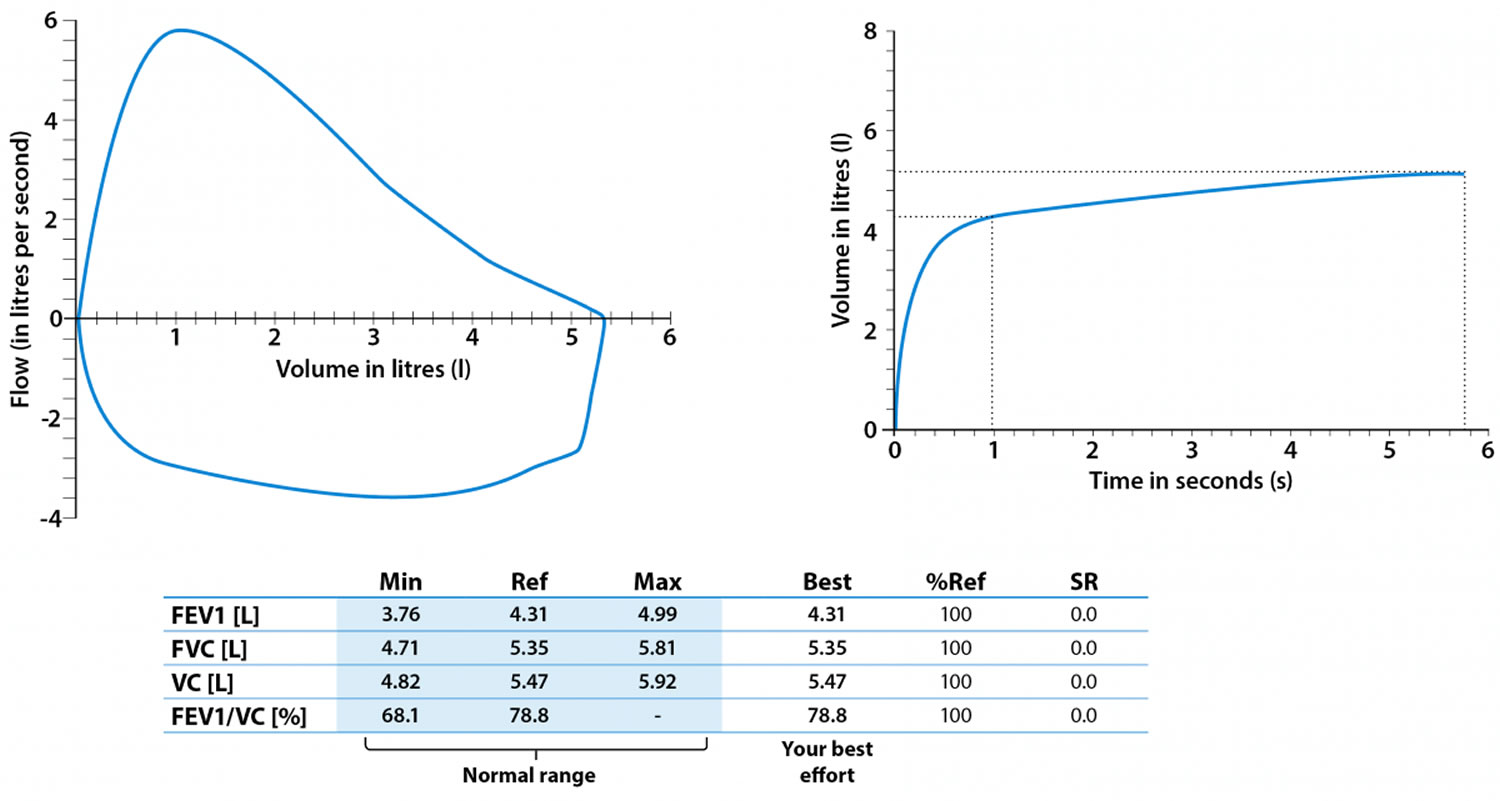
Spirometry asthma
See spirometry obstructive pattern below.
Spirometry interpretation
A spirometry reading usually shows one of three main patterns. These depends on how much air you can breathe out and what proportion you can get out in the first second:
- Normal
- Obstructive pattern
- Restrictive pattern
Normal pattern
The normal range is calculated by the spirometer based on your height, age, gender and ethnicity. If your lungs and airways are healthy, you can blow out most of your breath in the first second. This pattern tells your doctor that your spirometry test is normal when compared to the expected results for you.
Figure 2. Spirometry normal pattern – measuring FEV1 and FVC
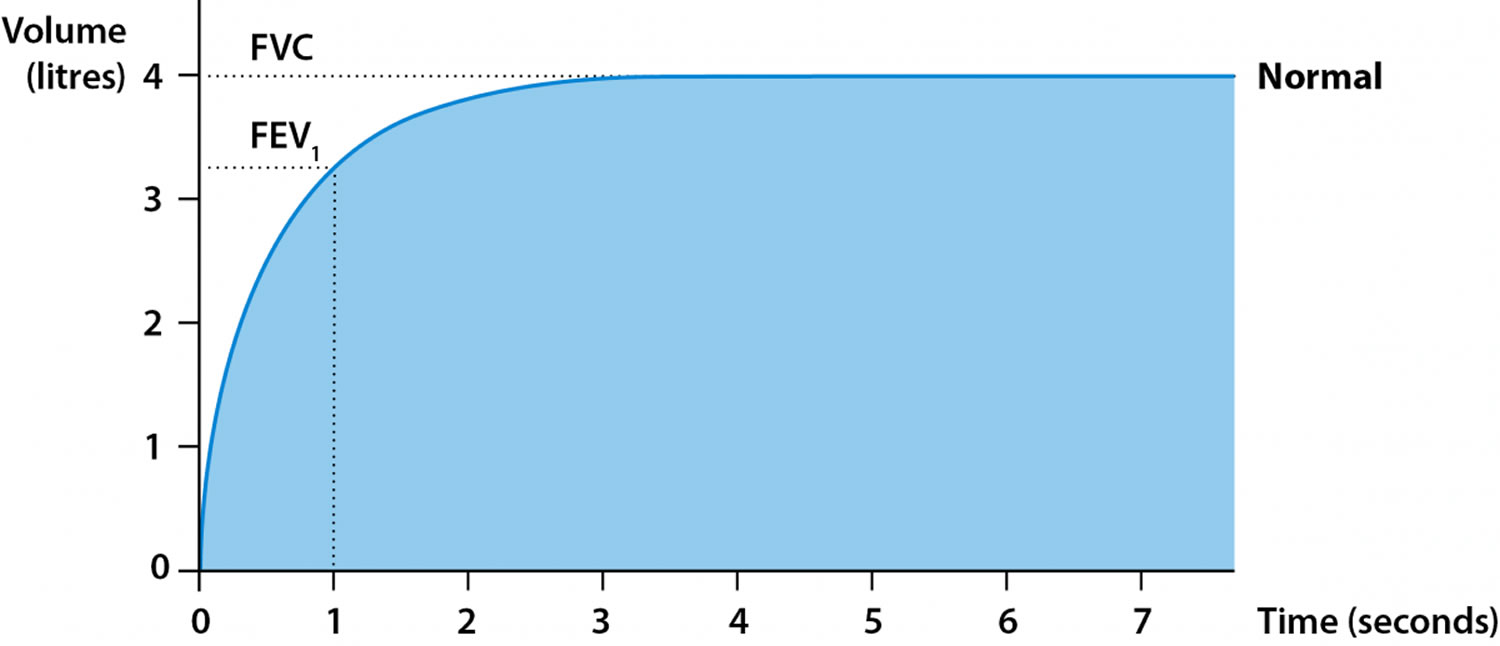
Figure 3. Spirometry normal pattern – Flow-volume measurement
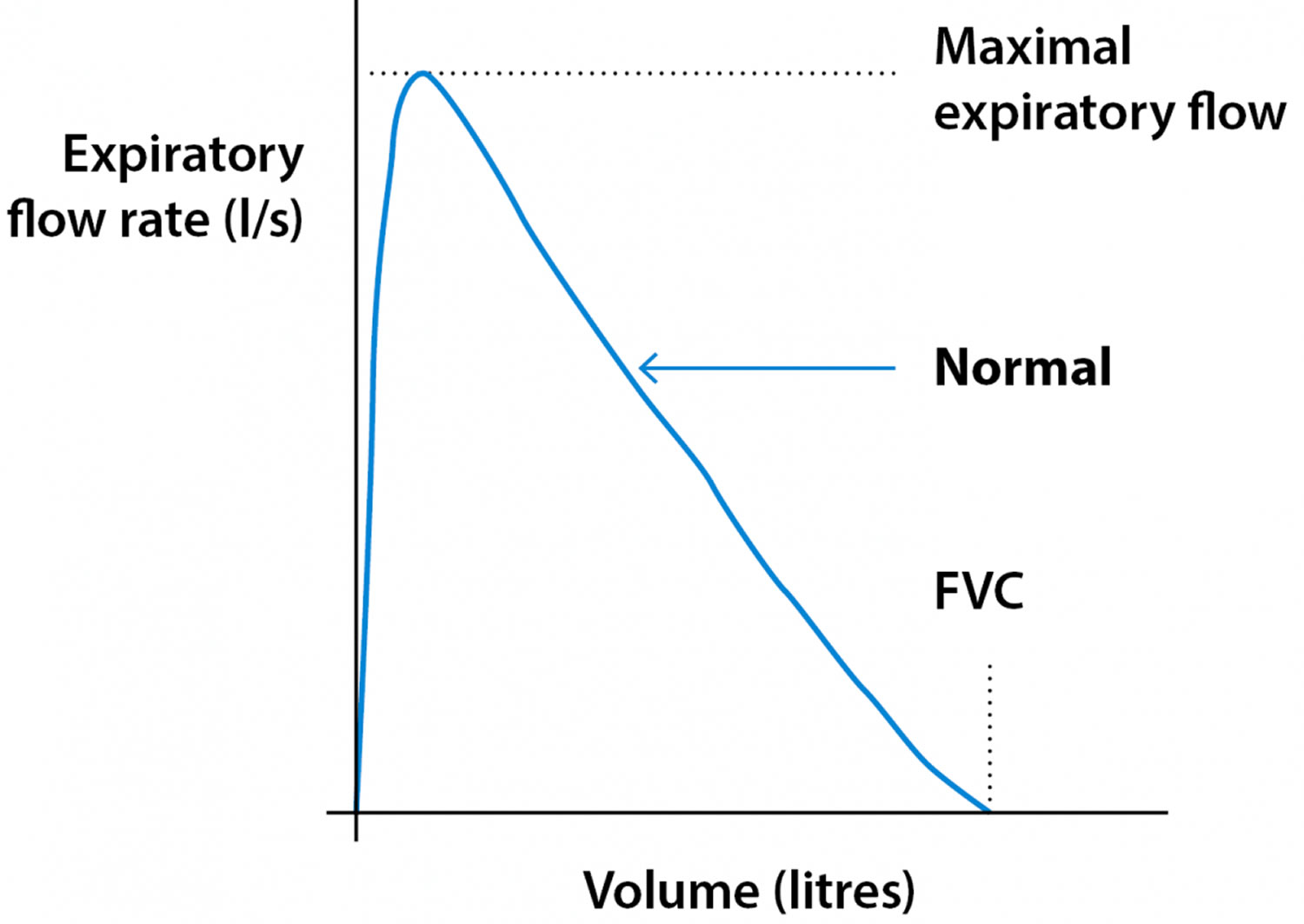
Spirometry Obstructive pattern
An obstructive pattern is typical if you have a lung conditions that narrow your airways, such as COPD and asthma. This means that the air flows out of your lungs more slowly than it should (low FEV1) with less than 70% of the total amount in the first second.
Spirometry can help to assess if inhaled medication or inhalers can open up your airways by reversibility testing. Usually, medication is more effective if you have asthma.
Reversibility testing helps to grade the severity of COPD and other conditions according to your FEV1 measurement after you have taken a medication to relax and widen your airways.
If you are living with COPD and the FEV1/FVC ratio is lower than expected, the criteria below is used.
Table 1. Grade of airflow obstruction
| Grade of airflow obstruction | |
|---|---|
| Mild | FEV1 is 80% or more of the predicted value. If you have mild COPD, you spirometry test results can be normal after you take medication. |
| Moderate | FEV1 is 50-79% of the predicted value after medication |
| Severe | FEV1 is 30-49% of the predicted value after medication |
| Very severe | FEV1is below 30% of the predicted value after medication |
Figure 4. Spirometry Obstructive pattern – measuring FEV1 and FVC

Figure 5. Spirometry Obstructive pattern – Flow-volume measurement
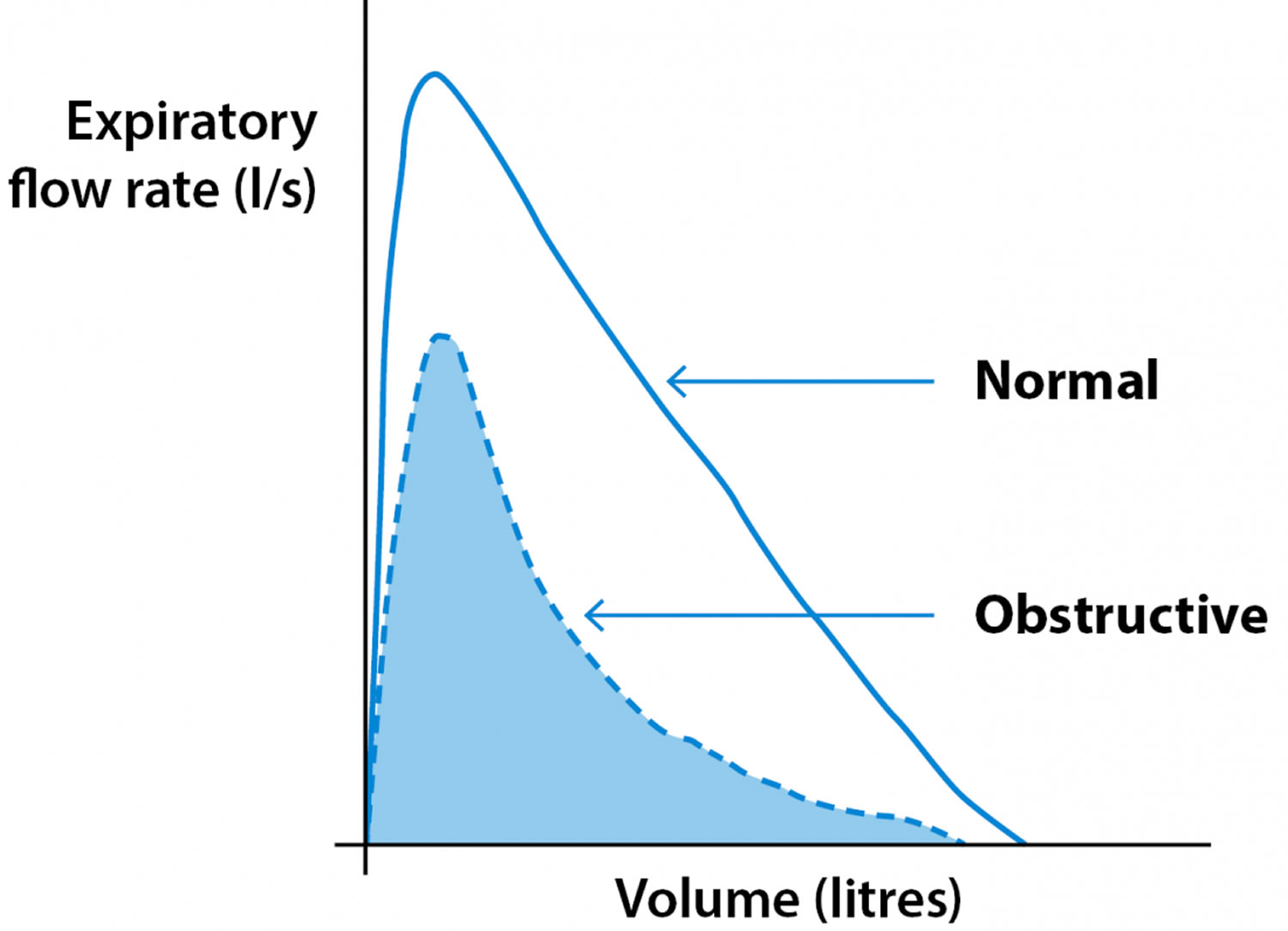
Spirometry Restrictive pattern
With a restrictive pattern, the total amount of air you can breathe in is reduced but the speed you can breathe out is preserved. In this situation, both the FEV1 and FVC will be lower than predicted, but the ratio between the two will not be reduced.
This is caused by various conditions that affect the tissue of your lungs or affect the capacity of your lungs to expand and hold a normal amount of air, such as pulmonary fibrosis. This pattern can also be seen in people who are significantly overweight, have an abnormal curvature of the spine or weak breathing muscles.
Figure 6. Spirometry Restrictive pattern – measuring FEV1 and FVC
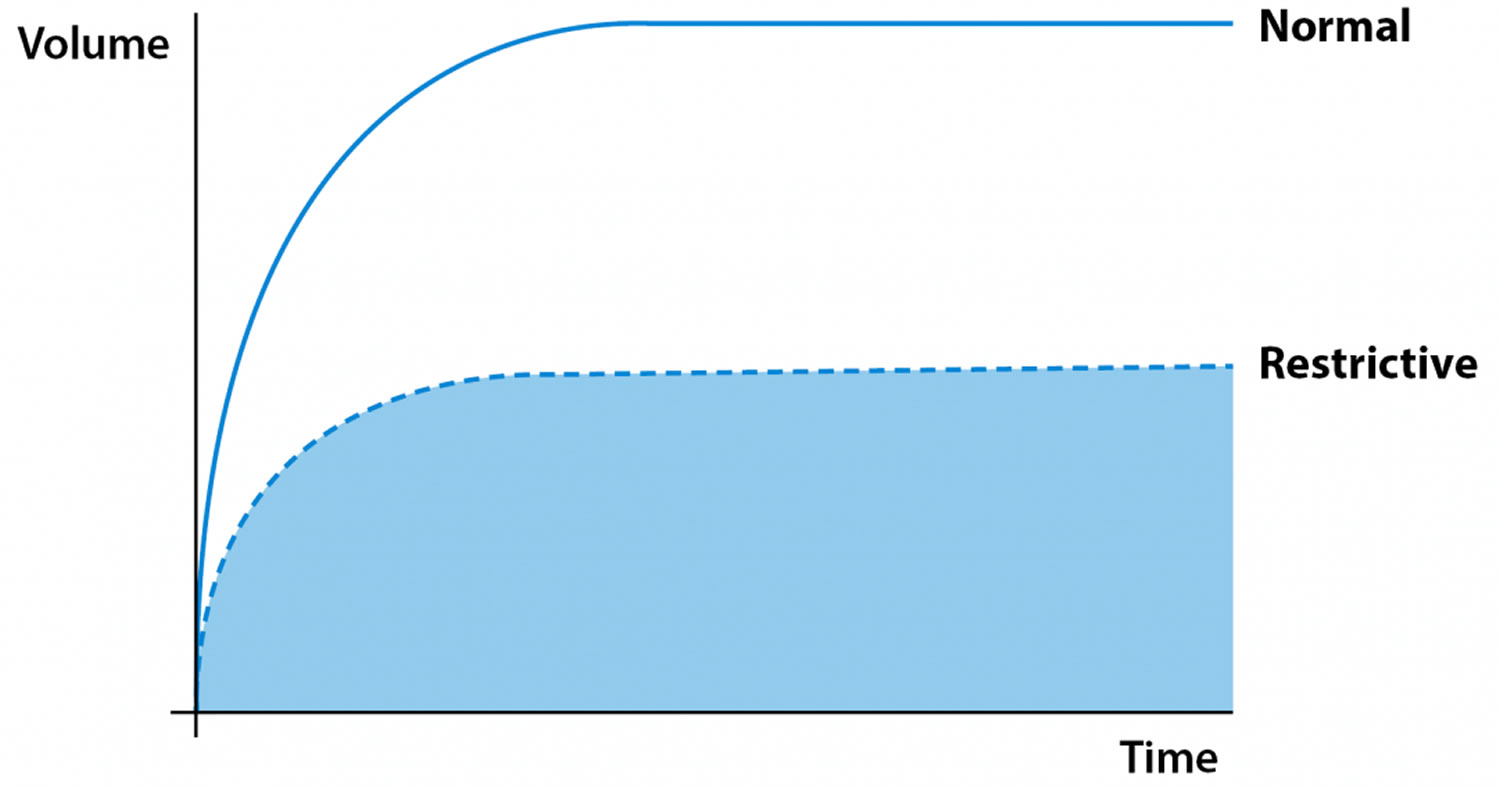
Figure 7. Spirometry Restrictive pattern
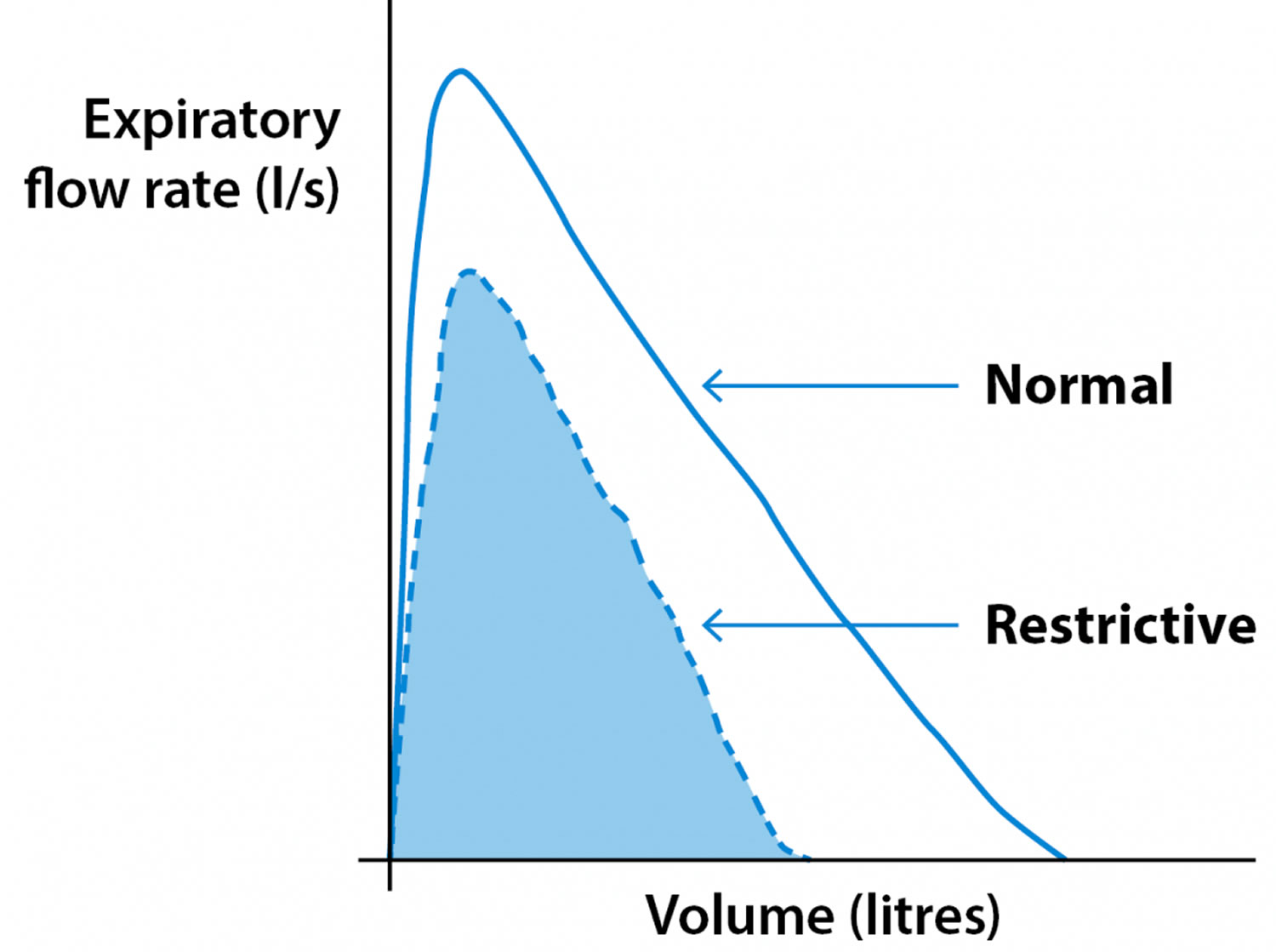
Combined patterns
Sometimes these two processes (obstruction and restriction) combine – where both the total amount of air and how fast you can blow out are reduced. This happens in severe emphysema or cystic fibrosis, and can also happen if someone is obese.
References